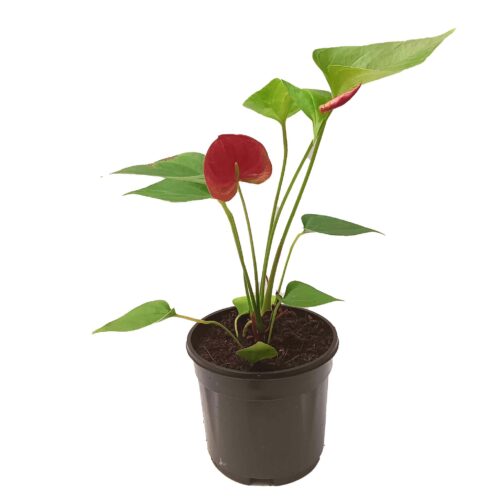Glossostigma elatinoides [Tc] from New Zealand is popular in Japanese-themed aquariums. It is one of the tiniest aquarium plants (2-3 cm tall), making it an excellent foreground plant. A difficult plant that requires a lot of light. If there is insufficient light, it grows upwards. Make certain that larger plants do not overshadow it. When planting in the aquarium, small clumps (approximately 1/8 pot) should be placed at few centimetre intervals to help the plants grow together more quickly. Growth is aided significantly by CO2 addition and soft water. Glossostigma Elantinoides is a popular foreground aquarium plant in Iwagumi-style nature aquariums. Glossostigma Elatinoides, considered one of the smallest and slowest-growing aquarium plants, is also commonly used in nature-style aquarium tanks. Glosso, for short, is a beautiful, bright green aquatic plant that is suitable for almost all aquarium tank sizes. While Glossostigma Elatinoides is relatively easy to care for, if less than ideal conditions are provided, this aquarium plant will exhibit undesirable growth characteristics. If the aquarium LED lighting unit is insufficiently powerful, Glosso, like many other aquarium plants, will begin to grow upwards in search of the lighting source. To achieve the low-growing, lush carpet that this aquatic plant is coveted for, care requirements include high light, CO2 injection, and a nutrient-dense aquarium soil. Soft water also promotes significant growth. When planting, divide the Glosso into smaller pieces and plant them halfway into the aquarium soil, about half an inch apart. Glossostigma Elatinoides, like most aquarium foreground aquatic plants, can be grown using the dry start method, which involves allowing the aquarium plant to establish itself before flooding the tank. If growing conditions are favourable, Glosso is a fast grower that will require regular trimming to maintain a clean appearance.
Glossostigma elatinoides [Tc] is a popular Japanese-style tank plant. Because it is one of the smallest aquarium plants, it is ideal for the foreground. A demanding plant that requires a lot of light. If the lighting is insufficient, it will grow upwards. Larger plants must not shade it out. When planting, make small tufts (about 1/8 of the pot) and plant at a few centimetres apart. As a result, you will have a larger group in less time. The addition of CO2 and soft water significantly boosts growth.
Glossostigma elatinoides is a low-growing lawnlike aquarium plant with creeping runners and spatula-like leaves that grows emersed to completely submerged in bogs, floodplains, river banks, and lakeshores in its native habitats of Australia, Tasmania, and New Zealand. Takashi Amano discovered the previously unknown plant in 1980. He brought it to Japan via the aquatic plant nursery Dennerle and created the first Nature Aquaria layouts with Glossostigma carpets. Meanwhile, Glossostigma elatinoides has become one of the world’s most popular foreground plants.
Glossostigma elatinoides [Tc] can be confused with small submerged waterclovers (Marsilea). The creeping runners of Glossstigma, on the other hand, have opposing leaves (2 leaves per node), whereas those of Marsilea are alternate (1 leaf per node). Furthermore, Glossostigma leaves have a distinct midrib, whereas Marsilea veins are fan-shaped, similar to Ginkgo tree leaves.
Glossostigma diandrum is another Glosso species that is closely related to G. elatinoides. Its flowers have two stamina, whereas G. elatinoides’ flowers have four.
Given enough light and CO2, G. elatinoides is relatively simple to cultivate. The intensity of the light should be at least 0.5 watts per litre. Glosso forms runners quickly in sufficient light, covering the entire ground in a relatively short time. However, when there is insufficient light, it tends to grow out long. It requires sufficient nitrate (5 mg/l or higher), phosphate (0.5 mg/l or higher), iron, and micronutrients for good growth. Nitrate deficiency causes yellowish leaves and premature shedding of older leaves; phosphate deficiency causes significant growth reduction and the plant to take on a distinct dark green hue. Transparent spots on the leaves are caused by an iron deficiency.
If you purchase Glossostigma elatinoides in trade, you will most likely receive the emersed form. Plant in groups of three to four stems and wait for submerged growth, which takes about two weeks. The new, submerged leaves can then be cut off and replanted into the substrate. Make sure to completely bury them in the ground and only remove the leaf tips from the substrate. If you use this method, and there is enough light, CO2, and nutrients, you will have complete ground coverage in a few weeks.
Because of its slow growth, G. elatinoides is an excellent foreground plant. It forms dense plant carpets that are particularly appealing in Nature Aquaria.
Is Glossostigma Elatinoides a simple plant to grow?
Given enough light and CO2, G. elatinoides is relatively simple to cultivate. The intensity of the light should be at least 0.5 watts per litre. Glosso forms runners quickly in sufficient light, covering the entire ground in a relatively short time.
Is CO2 required by Glossostigma Elatinoides?
Glossostigma elatinoides requires special fertilisers and an additional supply of CO2 in the tank to grow healthily. Despite the fact that it grows on the tank bottom, the plant requires a high level of illumination, which must be considered when placing it in the tank.
Glossostigma elatinoides [Tc] cultivation
It should contain a lot of nutrients, especially iron. The roots of the plant are thin and long, and the soft substrate allows for deep root penetration into the rich substrate below. It is much healthier for the plant if the substrate is sour and soft. Glosso requires a high concentration of potassium and iron in liquid fertilisers.
Is Glossostigma Elatinoides contagious?
It is popular because it does not grow tall, but rather stays about an inch high and spreads horizontally. This makes it a near-ideal carpet plant. Glossostigma Elatinoides leaves become wider as they move away from the stem.
https://www.youtube.com/watch?v=XVCogGmZA9M


![Glossostigma elatinoides [Tc]](https://elysianflora.com/wp-content/uploads/2021/12/A77AD2C4-A271-43EA-86EB-56CCFBF6D0B2.jpeg)





